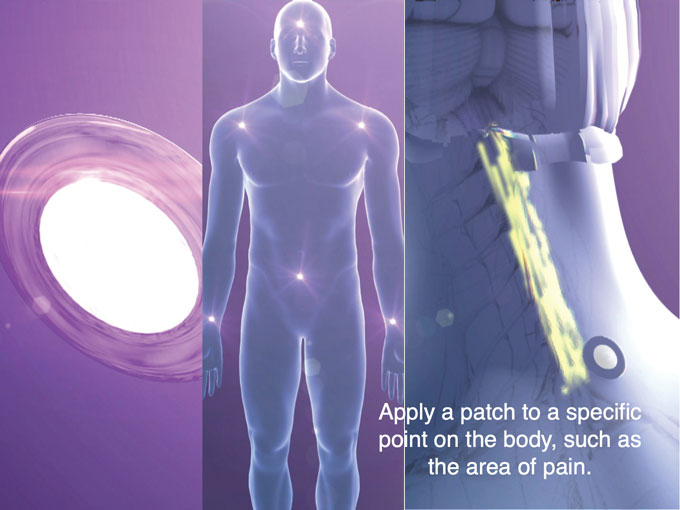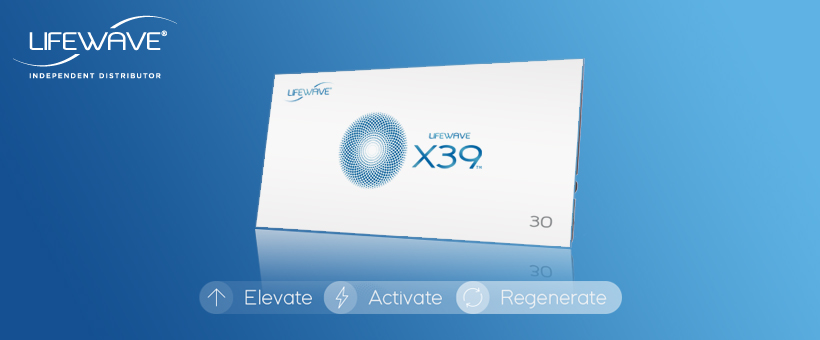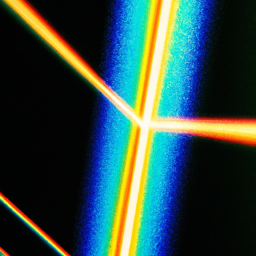Hey there! Have you ever wondered about the truth behind phototherapy? Well, in the article titled “Phototherapy: Myths and Facts Unveiled,” we’re going to dive right into it.
In this article, you’ll get all the information you need to separate fact from fiction when it comes to phototherapy. We’ll explore common misconceptions and debunk some myths surrounding this popular treatment. Whether you’re considering phototherapy for yourself or just curious about its benefits, this article will provide you with a comprehensive understanding of what it is, how it works, and its potential risks and benefits. So, stay tuned to learn more about the truth behind phototherapy!
What is Phototherapy?
Phototherapy is a medical treatment that involves the use of light to heal and improve various conditions in the body. It has been used for centuries in different forms and has evolved to become a widely accepted treatment option. In this article, we will explore the definition of phototherapy, its history, benefits, common myths, and facts surrounding this form of therapy.
Definition of Phototherapy
Phototherapy, also known as light therapy, is a non-invasive treatment that uses specific wavelengths of light to stimulate various biological processes in the body. The two most common types of light used in phototherapy are ultraviolet B (UVB) and ultraviolet A (UVA). UVB light has shorter wavelengths and is primarily used for treating skin conditions, while UVA light has longer wavelengths and is often used in combination with a photosensitizing drug for certain conditions like psoriasis.
Common Forms of Phototherapy
There are several common forms of phototherapy that are used depending on the specific condition being treated. UVB phototherapy involves exposure to UVB light for a specified duration and frequency. PUVA therapy is a combination treatment that uses a photosensitizing drug called psoralen, which is taken either orally or applied topically, followed by exposure to UVA light. Narrowband UVB therapy is a more focused form of UVB treatment that uses a narrower spectrum of wavelengths, which may be more effective for certain conditions.
The History of Phototherapy
Early uses of light therapy
The use of light therapy for therapeutic purposes can be traced back to ancient civilizations. Ancient Egyptians, for example, used sunlight to treat various skin conditions and recognized the healing properties of sunlight. In the early 20th century, Niels Ryberg Finsen, a Danish physician, conducted extensive research on the effects of light on the skin and developed a device known as the Finsen lamp. This lamp emitted UVB light and was used to successfully treat conditions like lupus vulgaris.
Development of modern Phototherapy techniques
Over the years, advancements in technology and scientific research have led to the development of more precise and targeted forms of phototherapy. In the 1970s, narrowband UVB therapy was introduced as a more effective and safer alternative to broad-spectrum UVB therapy. The development of UVA light therapy combined with the photosensitizing drug psoralen resulted in the creation of PUVA therapy, which became a popular treatment option for various skin conditions.
Benefits of Phototherapy
Treatment of skin conditions
One of the most well-known benefits of phototherapy is its effectiveness in treating various skin conditions. UVB phototherapy has been proven to be highly effective in managing conditions such as psoriasis, eczema, vitiligo, and atopic dermatitis. The targeted exposure to UVB light helps to slow down the excessive growth of skin cells, reduce inflammation, and improve overall skin health.
Management of mood disorders
In addition to its dermatological benefits, phototherapy has also shown promising results in the management of mood disorders such as seasonal affective disorder (SAD), depression, and sleep disorders. SAD, in particular, is a type of depression that occurs during specific seasons, typically the winter months, due to reduced exposure to natural sunlight. Phototherapy, especially using bright light therapy, has been found to help alleviate the symptoms of SAD by regulating circadian rhythms and increasing serotonin production.
Enhancement of vitamin D levels
Sunlight is essential for the synthesis of vitamin D in the body. Vitamin D plays a crucial role in maintaining healthy bones, teeth, and overall immune function. However, many people, especially those living in regions with limited sunlight or those who have certain medical conditions, may have low levels of vitamin D. Phototherapy can help increase vitamin D levels by providing controlled exposure to UVB light, therefore promoting better overall health.
Common Myths about Phototherapy
Phototherapy is unsafe
One of the common myths surrounding phototherapy is that it is unsafe and can lead to harmful side effects. While it is true that excessive or uncontrolled exposure to UV light can have adverse effects, phototherapy is conducted under the supervision of healthcare professionals who monitor the dosage and duration of treatment to ensure safety. Additionally, modern phototherapy devices have built-in safety measures, such as timers and dosage control, to minimize the risk of overexposure.
Phototherapy causes skin cancer
Another prevalent myth is that phototherapy increases the risk of skin cancer. While prolonged exposure to sunlight and certain forms of UV radiation can contribute to the development of skin cancer, the controlled and monitored exposure to UV light during phototherapy does not pose a significant risk. Numerous studies have shown that the risk of skin cancer due to phototherapy is minimal, especially when proper safety measures are followed.
Facts about Phototherapy
Effectiveness of Phototherapy
Research has consistently shown the effectiveness of phototherapy in treating various skin conditions. UVB phototherapy, in particular, has been proven to be highly successful in reducing symptoms and improving the quality of life for patients with psoriasis, eczema, and other related conditions. PUVA therapy has also shown positive results in managing psoriasis, vitiligo, and certain types of skin lymphomas.
Safety measures in Phototherapy
To ensure the safety of patients undergoing phototherapy, healthcare professionals follow strict protocols and guidelines. They carefully determine the appropriate dosage and frequency of treatments based on the individual’s skin type, condition, and medical history. Regular monitoring and evaluation are conducted to assess the patient’s response to treatment and adjust accordingly. Protective measures, such as shielding sensitive areas and using appropriate eyewear, are in place to minimize any potential risks.
Low risk of skin cancer
Contrary to the myth that phototherapy increases the risk of skin cancer, studies have shown that the risk is minimal, especially when safety guidelines are followed. The risk of developing skin cancer from a controlled course of phototherapy is significantly lower than the risk associated with untreated skin conditions. Furthermore, dermatologists and healthcare professionals closely monitor patients during and after treatment to promptly address any concerns or potential risks.
Different Types of Phototherapy
UVB Phototherapy
UVB phototherapy involves the use of specific wavelengths of UVB light to treat various skin conditions. It is administered in a controlled environment, either through a phototherapy booth or a handheld device, and the duration and frequency of treatments depend on the individual’s condition and response to therapy. UVB phototherapy is considered safe and highly effective for conditions such as psoriasis, eczema, and vitiligo.
PUVA Therapy
PUVA therapy combines the use of a photosensitizing drug called psoralen and exposure to UVA light. Psoralen can be taken orally or applied topically, depending on the specific condition being treated. Once the psoralen is absorbed or applied to the skin, the affected areas are exposed to UVA light. This combination therapy has been shown to be effective in managing certain types of psoriasis, vitiligo, and cutaneous T-cell lymphoma.
Narrowband UVB Therapy
Narrowband UVB therapy is a more focused form of UVB phototherapy that uses a narrower spectrum of wavelengths. This targeted approach has been found to be more effective in treating various skin conditions, especially psoriasis and eczema. Narrowband UVB light has a higher therapeutic ratio, meaning it delivers the most effective treatment while minimizing unnecessary exposure to UV radiation.
Who can Benefit from Phototherapy?
Patients with psoriasis
Psoriasis is a chronic autoimmune condition that affects the skin and can cause red, itchy, and scaly patches to appear on the body. Phototherapy, particularly UVB and PUVA therapy, has shown significant improvement in reducing psoriasis symptoms, such as scaling, inflammation, and thickness of the skin. It can help manage flare-ups and induce remission for extended periods, improving the overall quality of life for patients.
Individuals with eczema
Eczema, also known as atopic dermatitis, is a chronic inflammatory skin condition characterized by itchy and inflamed patches. Phototherapy, especially UVB and narrowband UVB therapy, has demonstrated positive results in reducing eczema symptoms and providing relief to sufferers. It helps to soothe irritated skin, reduce inflammation, and alleviate itching, leading to improved skin health and better quality of life.
People with seasonal affective disorder (SAD)
Seasonal affective disorder, commonly known as SAD, is a type of depression that occurs seasonally, usually during the winter months when exposure to natural sunlight is limited. Phototherapy, particularly bright light therapy, has been proven to be effective in managing the symptoms of SAD by regulating circadian rhythms and increasing serotonin production. Regular exposure to bright light can help uplift mood, increase energy levels, and alleviate depressive symptoms.
Preparing for Phototherapy Treatment
Consultation with a healthcare professional
Before starting phototherapy treatment, it is important to consult with a healthcare professional, preferably a dermatologist or a medical specialist experienced in phototherapy. They will assess your condition, review your medical history, and determine the most suitable form of phototherapy for your specific needs. They will also inform you about the potential risks and benefits, discuss any precautions or contraindications, and answer any questions or concerns you may have.
Protecting sensitive areas of the body
During phototherapy treatment, it is crucial to protect sensitive areas of the body, such as the eyes, genitals, and breasts. These areas are more susceptible to the harmful effects of UV radiation and require special care. Healthcare professionals will provide appropriate guidelines and measures, such as using eye protection, covering nipples with protective shields, and using sunscreen on unaffected areas.
Avoiding certain medications and substances
Some medications and substances can increase the skin’s sensitivity to light and may interfere with the effectiveness of phototherapy. It is important to inform your healthcare professional about any medications, topical creams, or supplements you are currently using or have recently used. They will advise you on any necessary precautions or adjustments required, such as discontinuing certain medications or avoiding specific substances that can interfere with the treatment.
What to Expect during Phototherapy Treatment
Duration and frequency of treatment sessions
The duration and frequency of phototherapy sessions vary depending on the individual’s condition, response to treatment, and the prescribed protocol. Generally, the initial phase of phototherapy involves more frequent sessions, typically two to three times a week, which gradually decrease as the condition improves. Each session may last a few minutes to several minutes, depending on the specific type of phototherapy being administered.
Potential side effects
While phototherapy is generally well-tolerated, there can be some side effects associated with treatment. These can include temporary redness, itching, dryness, or mild sunburn-like symptoms. These side effects are typically mild and self-limiting, and healthcare professionals closely monitor patients to ensure the appropriate adjustments are made to minimize discomfort. It is essential to communicate any concerns or adverse reactions to your healthcare professional.
Improvement timeline
The timeline for improvement varies from person to person and depends on factors such as the severity of the condition, individual response to treatment, and adherence to the prescribed protocol. Some individuals may begin seeing improvements within a few weeks, while others may require several months of treatment for significant changes. Consistency and patience are key when undergoing phototherapy, and it is important to follow the recommended treatment plan and scheduled follow-up appointments for optimal results.
Conclusion
Phototherapy is a safe and effective treatment option for various skin conditions and mood disorders. It has a long history and has evolved into a precise and targeted therapy, providing numerous benefits for patients. Despite common myths surrounding its safety and the risk of developing skin cancer, phototherapy, when administered by healthcare professionals, follows strict safety measures to ensure its effectiveness and minimize any potential risks. The different forms of phototherapy, such as UVB, PUVA, and narrowband UVB therapy, cater to specific conditions and have shown significant improvements in managing psoriasis, eczema, and mood disorders like seasonal affective disorder. Before undergoing phototherapy, it is important to consult with a healthcare professional to determine the most suitable treatment plan and to understand the necessary precautions and guidelines for a successful outcome. With proper care, phototherapy offers patients a ray of hope in improving their skin health and overall well-being.





